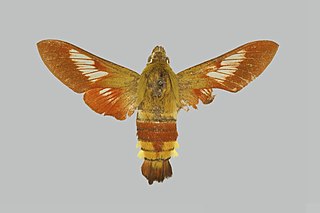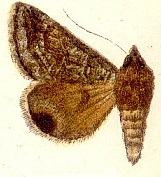
Callistege mi, the Mother Shipton moth, is a moth of the family Erebidae. It was classified by Carl Alexander Clerck in 1759, and is also known under the name of Euclidia mi. In Finnish it is known as piirtoyökkönen and in German as Scheck-Tageule.

The burnet companion moth is a moth of the family Erebidae. It is found in most of the Palearctic realm, from Ireland in the west to Mongolia and Siberia in the east and south to the Mediterranean and North Africa.

Callistege is a genus of moths in the family Erebidae.

Euclidia is a genus of moths in the family Erebidae.

Lacanobia is a genus of moths in the family Noctuidae.

Euclidia cuspidea, the toothed somberwing, is a moth of the family Erebidae. The species was first described by Jacob Hübner in 1818. It is found in North America from Quebec west to western Alberta, north to the Northwest Territories and south to the Gulf of Mexico.
Euclidia ardita is a moth of the family Erebidae. It is found from British Columbia south to California.

Euclidia triquetra is a moth of the family Erebidae first described by Michael Denis and Ignaz Schiffermüller in 1775. It is found in south-eastern Europe, as well as Kazakhstan, Anatolia eastern Siberia up to the Pacific Ocean. Its habitat consists of warm, dry areas.

Hemaris dentata, the Anatolian bee hawkmoth, is a moth of the family Sphingidae. The species was first described by Otto Staudinger in 1887. It is known from southern Turkey as far west as the Taurus Mountains.

Arethusana is a butterfly genus from the subfamily Satyrinae of the brush-footed butterfly family (Nymphalidae). It is composed of only one species, Arethusana arethusa, the false grayling.
Euclidia consors is a moth of the family Erebidae found in Japan (Honshu).
Euclidia limbosa is a moth of the family Erebidae. It is found in Senegal.
Euclidia tarsalis is a moth of the family Erebidae found in Sri Lanka.
Euclidia vittata is a moth of the family Erebidae found in Chile.
Euclidia amudarya is a moth of the family Erebidae found in Turkmenistan.

Euclidia munita is a moth of the family Erebidae first described by Jacob Hübner in 1813. It is found in Ukraine, south-western Russia, Kazakhstan, Tajikistan, Turkmenistan, Kyrgyzstan, northern Iran, Afghanistan, China and Mongolia.
Drasteria catocalis is a moth of the family Erebidae. It is found in Kyrghyzstan, Kazakhstan, Tajikistan, China, Uzbekistan and Russia.
Drasteria saisani is a moth of the family Erebidae. It is found in Crimea and in southern Russia, Armenia, Kazakhstan, Uzbekistan, Kyrgyzstan, Tajikistan, Turkmenistan, Daghestan, Turkey, Iran, Afghanistan, Pakistan and China.
Drasteria sinuosa is a moth of the family Erebidae. It is found in Turkey, Iran, Kazakhstan, Tajikistan, Uzbekistan, Afghanistan and Turkmenistan.

Drasteria tenera is a moth of the family Erebidae. It is found in Russia, Kazakhstan, Kyrgyzstan and China (Tibet).










